
The Palestinian Jerusalemite cuisine of today would be unrecognizable to our indigenous ancestors. Decades of fragmentation of the Palestinian territory and extensive urbanization of the Holy Land by the Israeli military occupation have transformed a mostly green local fare to a kitchen dominated by chicken, rice, and tomatoes – three ingredients that are not indigenous to Palestine. Born and raised in Jerusalem, I have childhood memories that are filled with smells of signature dishes such as maqlouba, a dish prepared today from meat and rice and made of imported stuff. Unintentionally, I have passed on these smells to my three children, who consider any dish I cook that excludes rice and meat to be a snack. Now I have a difficult confession to make: I am a nutritionist by profession.
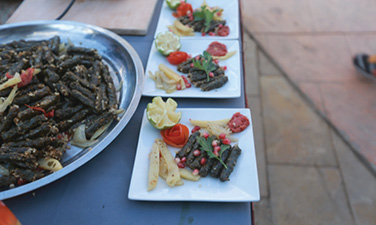
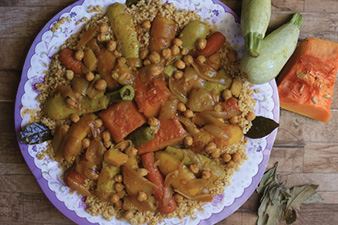
My primary role at the World Food Programme (WFP) is to ensure that the most vulnerable Palestinian families, particularly the elderly, children, and pregnant and lactating women, receive food assistance that provides them with a daily nutritious meal. Helping people adopt and practice healthy eating and cooking habits, even on a small budget, is also key to my job. However, every time I visit these families in Yatta, Bethlehem, the Bedouin communities in Area C of the West Bank, Khan Yunis, or Gaza City, I am amazed by their instinctive loyalty to traditional Palestinian food. I found myself taking the most enjoyable lessons from wonderful women, men, boys, and girls who prepared delicious meals from ingredients they collected from their small home gardens or after a stroll in nearby fields.
The United Nations World Food Programme (WFP), the recipient of the 2020 Nobel Peace Prize, works with various partners in Palestine to provide essential food assistance to the most vulnerable families. WFP also helps families reduce micronutrient deficiencies and malnutrition rates through activities that celebrate the collective joy of simple yet healthy food.
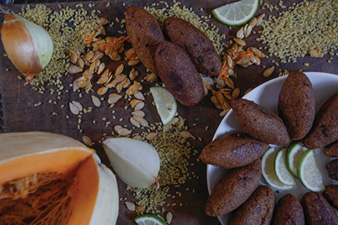
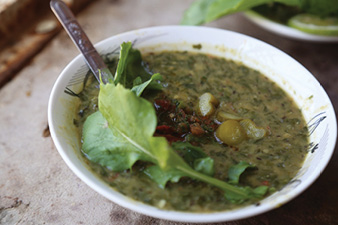
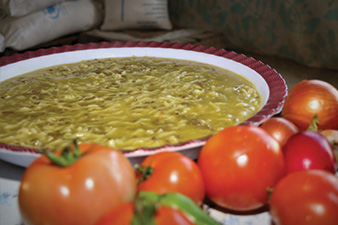
The celebration of World Food Day that WFP marks every year through different activities gave another attestation. Upon the announcement by WFP of an interactive cooking competition for the best healthy, most creative, and yet inexpensive dish, thousands of recipes were sent from enthusiastic participants. The best among the selected recipes varied from khubeizeh (common mallow) rolls, maftoul (crushed, rolled, steamed wheat semolina) with vegetables, pumpkin kibbeh (longish rolls with a filling in a shell of grain), and chards with lentils to rgag (homemade pasta with lentils). The creators of the best recipes were invited to a live cooking competition. They came with their spouses and children and cooked together, and the results were breathtaking.
One of the winners, Hala (39), from Al-Shaja’iyah in Gaza City, prepared Bean Bites, her favorite dish since childhood, with her upgrading touches to both taste and presentation.
Hala’s dish
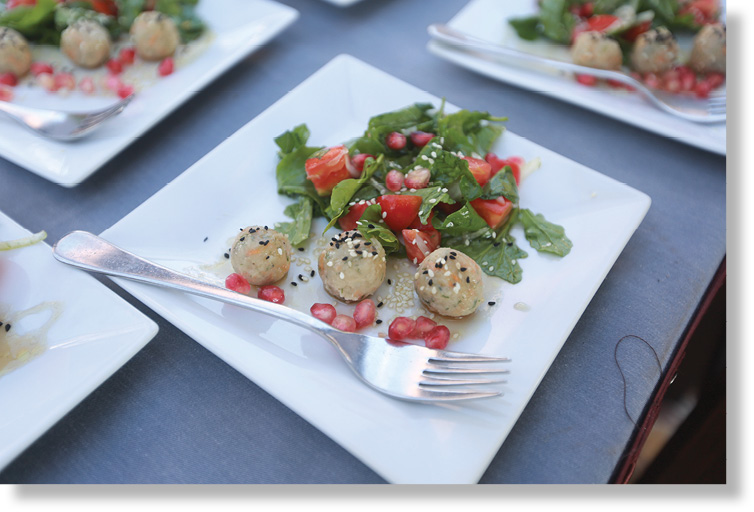
Ingredients:
1 medium potato
1 grated carrot
2 small tomatoes
1 green onion
1 sprig of dill
salt
cumin
black pepper
garlic powder
arugula leaves
For the dressing:
1 clove of garlic
½ a lemon
a pinch of black cumin
1 tablespoon of olive oil
½ tablespoon of pomegranate molasses
a pinch of salt
White sesame seeds can be used as decoration.
Nutritional value of 300 grams (a serving plate) is 361 calories, 17.15 grams of protein, 4.88 grams of fat. The nutrients in the meal cover more than 30 percent of the needs of a pregnant or breastfeeding woman or of children two to five years old: folate, iron, zinc, vitamins A, C, K, magnesium.
The meal cost was 1.20 ILS (US$ 0.345).
Hala’s recipe is one of more than 20 recipes that WFP compiled in a cookbook to be used with other communication materials for raising awareness about healthy cooking and eating. This participatory approach presents an authentic contribution of Palestinian women, men, and children to their own communities. WFP helped with some tips such as suggesting alternate cooking methods and the addition of certain ingredients that foster nutritional benefits without affecting the original delicious taste. WFP explained how vitamin C in citrus fruits and other vegetables enhances the absorption of iron; whereas calcium-rich food inhibits iron absorption in humans. This means that eating the traditional Palestinian mujaddara, which is made of iron-rich lentils, is much healthier with salad prepared with lemon juice rather than with yogurt.
Palestinians are facing a double burden of malnutrition: high levels of micronutrient deficiencies and anemia alongside increasing obesity rates. Pregnant and lactating women and children under five years of age are particularly vulnerable to nutritional issues in the West Bank and Gaza Strip.
“Iron is found in meat, which we simply cannot afford” was the response I most frequently heard from women and mothers in the West Bank and Gaza Strip when asked why they do not consume iron-rich foods. Having concerns over the high prevalence of anemia among children and mothers, WFP, together with UNICEF, engaged with mothers to explore the reasons why so many women who know they should consume iron-rich foods do not do so. A survey and in-depth interviews were conducted to help understand the barriers as well as possible motivators to increasing iron-rich foods in the diets of pregnant and lactating women. The main barriers that were revealed included the lack of awareness that there are two food sources of iron: animal and plant. The surveyed mothers tended to focus solely on animal sources, such as red meats and chicken, which they said they could not afford. The mothers were unaware of the more affordable plant sources of iron-rich foods such as lentils, chickpeas, molokhia, and spinach. Even when the mothers were aware of such high-iron plant sources, they were unsure how such foods could be integrated into their existing meal preferences, without affecting taste or exhausting their limited budgets.
WFP is providing food assistance to more than 400,000 of the most vulnerable non-refugee Palestinians in Gaza, the West Bank, and East Jerusalem. Food assistance is delivered predominantly through cash-based transfers in the form of electronic food vouchers, enabling families to purchase foods of their choice at more than 330 designated retailers. To help these families gain the most from food assistance, WFP is implementing various interactive sessions, particularly for women, but with a direct impact on the entire family, to learn and adopt best cooking and eating practices while remaining attached to their rich traditional menu.


